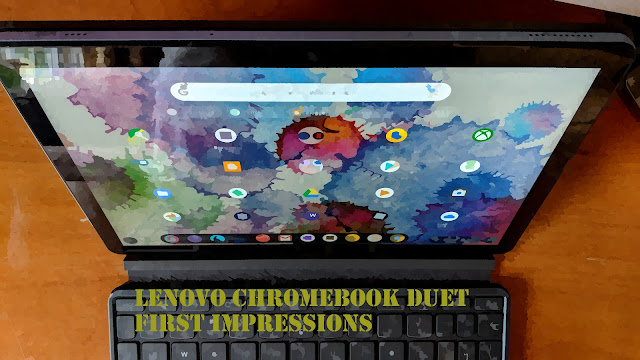Featured
- Get link
- X
- Other Apps
Windows 11 Reaction: Diferent in the the most delightful ways
Windows 11 UI
Windows 11 is dialing the Windows UI up to 11 with the introduction of a fresh start menu, action center, and even a new Windows widgets space. Starting with the start menu (pun intended) we begin to see the influence of Windows 10X with live tiles being demolished and neat app icons replacing it. The new start menu also features a feed of your latest documents and recommended apps based on your use with a search bar at the top. This new start menu is a one-stop-shop for search, apps, and recommendations that combines the search menu and start menu into one UI. I'll miss my live tiles, but progress is progress, and this new start menu is putting more into a smaller area. Although I wish the power/sleep button was included.
The next interface that has been changed is the action center and calendar view with the calendar being combined with notifications. The action center is now also smaller with volume controls built-in along with fewer tiles and a media control tile at the top. I still feel that splitting notifications and the action center is inconvenient, but I digress because calendar was quite empty in Windows 10. Media controls isn't groundbreaking, but it does help tablet users and laptops without media keys; nor wasted space nor universally useful. I'm going to miss the tiles from the old action center because of the tiles that were replaced. I used 75% of those tiles daily and I hope there's a way to get that density back. At the very least an option to expand the action center.
The next part of the UI is the new Windows Widgets panel. Windows Widgets is a feed of news, weather, and possible third-party widgets powered by AI. Windows widgets is a panel that gives news and interests (a current feature in windows 10) a dedicated home. I've wanted interactive widgets in Windows for a long time (just a calculator widget), but it seems these widgets will favor the more static options from MacOS and iOS. I wish there was more to talk about these widgets but information about them is quite sparse and hard to find.
The updated Snap menu is another quite interesting feature that is making Windows easier for the mainstream. The new snap layout appears when you hover over the maximize button on the Window corner that brings up options to snap windows without the need to drag to the corners. I struggle to remember the keyboard shortcuts for more complicated Windows layouts and most people (like my mum) have never been able to figure out multitasking on Windows. The snap menu is a normal user's path to increased productivity via layouts most didn't even know were possible. Turns out realizing users are smarter than you though lead to better features.
The last UI block is an updated tablet interface that replaces Windows 10's tablet mode. This new interface uses the mouse gestures instead of dedicated gestures while also expanding the taskbar to make for a bigger touch target. No forced full screen either; Windows stay windows with easier resizing options. It even has vertical multitasking; something that was This is much better than tablet mode from Windows 10 because it lets you keep Windows as Windows instead of trying to force you to a completely different interface.
Apps
Let me cut to the chase: Android Apps on Windows. Via Intel "bridge" technology and Windows subsystems for Linux android apps from the Amazon Appstore (and possibly anyone with a legit android app) are now available on the Microsoft store. There is a hoop you need to pass through before you head into Android bliss on Windows. You need an amazon account to install any of the amazon Appstore apps and log in on first use (just for the first use). Most have an amazon account but needing one to access these Android apps is an inconvenience at best and a firewall at worst. Also, Android Apps will work across ARM, intel, and AMD devices. This is a bit of a wildcard for Windows with the precedent being the ok situation of Android apps on Chrome OS. I'm hoping their at least usable, but my hunch is that Android Apps are more of side-project than an actual app platform for Windows. As long as someone can get some use out of Android apps the fact that their available is just another app platform for Windows.
Now onto the actual store, the Microsoft store has gotten some major changes. First, the interface: the Microsoft store has gotten a visual overhaul that adds a new hamburger menu as the primary navigation interface while also adding a new icon. However, the problem with the old Microsoft store wasn't the actual UI but rather sluggish performance and app standards. Windows 11's app store solves both problems (sorta).
Developers can now send .exe and .msi application, otherwise known as unpackaged Win32 apps, to the Microsoft store. This opens the flood door to almost every Windows app in existence to be available in the Microsoft store. Traditional apps being included is a great idea with apps such as the Adobe creative cloud, VS Code, and VLC already being included. My only concern is security, with so many apps flooding in malware may slip through the cracks, I hope Microsoft has an honest review process.
As for performance issues the Microsoft is allowing developers to use their own CDN instead of Microsoft's that should be faster but really depends on the developer in question. However, for developers who do use Microsoft's CDN does this mean we're still getting the sluggish downloads and bugs? Microsoft hasn't made any comment on that topic thus far, so it remains to be seen. Microsoft is also allowing developers to use their own app transaction engines in apps on the Microsoft store with a 0% cut in revenue. This is a slight at both Google and Apple's 30% cut but desperate times call for desperate measures. Going 0% makes the Microsoft store a bigger target for more developers than ever before.
System
Microsoft made some changes to the system with a new touch keyboard and haptics. The new touch keyboard has float functionality, swipe typing, and better voice typing. There's also some new haptics in drawing apps; Microsoft was unclear over the specifics of this feature, but more haptics is better for Windows overall. Another feature is a "chat" app that's powered by Microsoft Teams for consumers. It includes the "meet now" that allows you to send a link to your friends and a video call via teams without needing a Microsoft account. This is possibly the last straw for skype as a consumer product and as the default messaging service on Windows. There's also SMS support for cross-platform messaging in this "chat" client.
Also new is Auto-HDR that is built on the Xbox technology of the same name. Although not as powerful as the Xbox version auto HDR does seem to help older games but somewhat isn't as useful as many would think. However, most game developers most likely turn-on or turn-off this feature for their games. Another gaming feature is support for Direct Storage which is another Xbox feature ported over to Windows 11. The nature of this feature basically allows for twice as many API calls as the normal APIs from Windows 10 making loading games faster than ever before.
Windows 11 is looking like the Windows 10X we wanted in the PC's we have.
Want to support the channel and Blog? You can
Buy Me a coffee with the button below!
- Get link
- X
- Other Apps
Popular Posts
Lenovo Chromebook Duet review: Opportunity knocks
- Get link
- X
- Other Apps











Comments
Post a Comment
If have something to say go ahead and speak your mind but please do so with respect for others opinions.